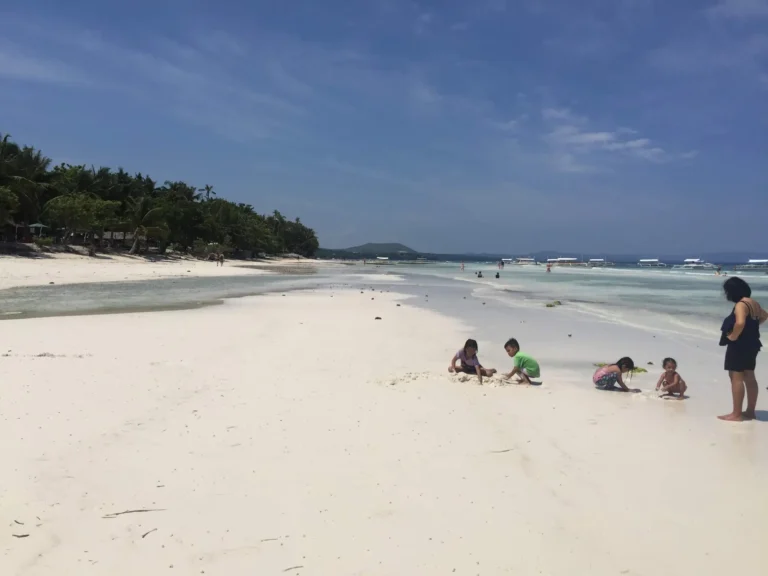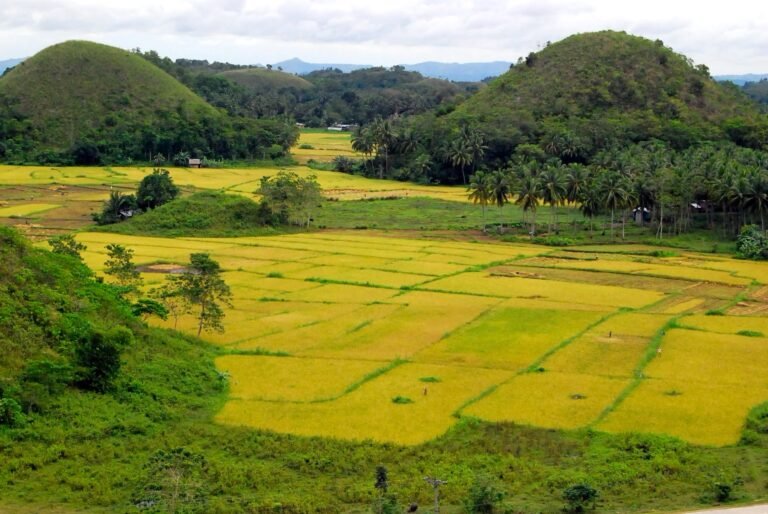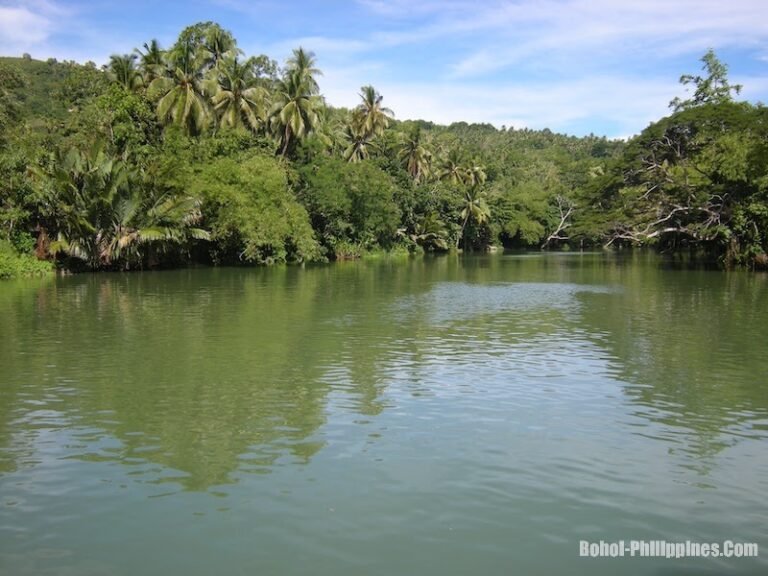Bohol, a gem in the Philippines, is renowned not only for its stunning landscapes and cultural heritage but also for its delectable culinary offerings. From iconic sweets to savory seafood, Bohol’s delicacies reflect the province’s rich traditions and local ingenuity. These treats make perfect pasalubong (souvenirs) to share with loved ones, offering a taste of Bohol’s vibrant culture.
Whether you’re exploring the Chocolate Hills, diving in Panglao, or attending local fiestas, indulging in these specialties is a must. Below is an updated guide to Bohol’s most beloved delicacies and must-have pasalubongs, showcasing their cultural significance and where to find them.
Peanut Kisses
Peanut Kisses, or biskwit nga mani, are Bohol’s signature sweet, shaped like miniature Hershey’s Kisses. Crafted from roasted peanuts ground into a fine powder, mixed with sugar and egg whites, these bite-sized cookies offer a delightful crunch that melts in your mouth. The meticulous process involves shaping the dough into small mounds and baking them to a golden-brown perfection, balancing nutty richness with subtle sweetness. A staple in souvenir shops, local markets, and grocery stores across Bohol, Peanut Kisses are often packaged in colorful boxes, making them an ideal gift. Their global popularity underscores their status as a culinary icon, embodying Bohol’s tradition of transforming simple ingredients into unforgettable treats.
Calamay
Calamay is a cherished Boholano delicacy, a sticky rice cake made from glutinous rice, coconut milk, and sugar. Its preparation is a labor of love: soaked rice is ground into a paste, blended with coconut milk and sugar, and cooked over low heat with continuous stirring to achieve a thick, caramelized texture. Traditionally wrapped in banana leaves or coconut husks, calamay’s chewy consistency and sweet, creamy flavor make it a favorite during fiestas and family gatherings. Found in markets and specialty shops, particularly in towns like Alburquerque, it’s a must-try for its rustic charm and cultural significance, often gifted as a pasalubong to share Bohol’s culinary heritage.
Ube Kinampay
Ube Kinampay, a vibrant purple yam (Dioscorea alata) grown primarily in Panglao Island and Guindulman, is a cornerstone of Bohol’s culinary and cultural identity. Known for its deep purple hue, sweet flavor, and aromatic profile, this yam thrives in Bohol’s sandy loam soil and ideal climate (25–30°C). Rich in calcium, vitamins, and glucose, it’s revered as a “sacred” crop, with local lore crediting it for sustaining communities through famine and hardship. Ube Kinampay is transformed into delectable treats like ube halaya (jam), ice cream, pastillas, and polvoron, while its skin is used for natural food coloring. The annual Ubi Festival in January celebrates this beloved crop, showcasing farmers’ products and cultural traditions. Look for these treats in Bohol’s markets or during the festival for an authentic taste.
Carabao Milk Products from Ubay
Ubay, a municipality in northeastern Bohol, is celebrated for its thriving carabao (water buffalo) milk industry. Known for its creamy texture and rich flavor, carabao milk is hand-milked by local farmers and crafted into products like cheese, yogurt, pastillas, and ice cream. These dairy delights offer a unique twist on traditional treats, highlighting the nutritional value and versatility of carabao milk. Available at Ubay’s local markets and dairy farms, these products support the region’s agricultural heritage and provide a delicious pasalubong option. Sampling them offers a taste of Bohol’s rural traditions and sustainable farming practices.
Mud Crab from Loay
Loay’s mud crabs (alimango, or Scylla serrata) are a seafood lover’s delight, prized for their large size and succulent meat. Thriving in the mangrove forests and estuaries near the Loboc River, these crabs are sustainably caught using crab pots, nets, or traditional bamboo traps. Prepared in dishes like steamed crabs, crab adobo, or buttered crabs, their sweet, tender meat pairs perfectly with local dipping sauces. Restaurants and seafood markets in Loay feature these delicacies, offering a taste of Bohol’s coastal bounty. Indulging in mud crab dishes is a culinary highlight that showcases the province’s rich maritime heritage.
Alupe
Alupe, a beloved treat from Bilar, is a soft, chewy dessert made from grated cassava, milk, and sugar. The batter is steamed or baked to achieve a delicate texture, offering a harmonious blend of cassava’s subtle flavor and creamy sweetness. Often enjoyed as a snack or dessert, alupe is a comforting indulgence, especially when paired with hot tea or coffee. Available from local vendors in Bilar or at markets across Bohol, this delicacy highlights the province’s knack for creating simple yet satisfying treats rooted in local ingredients.
Broas (Ladyfingers)
Broas, a specialty of Baclayon, are light, crisp cookies that melt in your mouth. These delicate ladyfingers, made with flour, sugar, and eggs, are perfect for pairing with milk, coffee, or hot chocolate. Their soft texture makes them a versatile ingredient in desserts like Mango Refrigerator Cake. Baclayon’s pastry tradition, born from using egg yolks left over from church construction in the Spanish era, adds historical depth to this treat. Find broas in local bakeries, especially in Baclayon, for a sweet pasalubong that carries a piece of Bohol’s culinary legacy.
Bibingka
Bibingka, a classic Filipino rice cake, is a Boholano favorite made from rice flour, coconut milk, sugar, and butter, often wrapped in banana leaves. Served as a morning painit (warm snack) with hot coffee or as an afternoon treat with cold soda, its soft, slightly chewy texture is universally loved. Available at roadside stalls and markets, bibingka is a staple during fiestas and a heartwarming pasalubong that captures Bohol’s festive spirit.
Maruya (Banana Fritters)
Maruya, made from saba bananas dipped in batter, fried, and rolled in sugar, is a beloved snack for all ages. Its crispy exterior and sweet, soft interior make it a healthy and satisfying treat. Found in street food stalls and markets across Bohol, maruya is a simple yet delightful pasalubong that showcases the province’s abundant banana harvests.
Biko
Biko, a sticky rice cake made from glutinous rice, coconut milk, and sugar, topped with latik (caramelized coconut curds), is a Filipino classic prevalent in Bohol’s celebrations. Its rich, chewy texture and sweet flavor make it a fiesta staple. Available in markets and during local events, biko is a heartfelt pasalubong that embodies Bohol’s communal traditions.
Torta
Bohol’s torta, a soft, fluffy, and moist cake, is a merienda favorite. Unlike the Spanish term for “cake,” this Boholano version is a light, easy-to-eat treat, often enjoyed in the afternoon. Found in bakeries and markets, particularly in Tagbilaran and Baclayon, torta is a delightful addition to any pasalubong haul, reflecting Bohol’s knack for comforting baked goods.
🧁 Other Traditional Snacks and Beverages
Sikwate
A traditional Filipino hot chocolate made from tablea (pure cacao tablets). Often enjoyed with puto or sticky rice treats during breakfast. Try it in old-style cafés or heritage homes around Baclayon or Tagbilaran.
Puto Maya with Mango and Sikwate
Sticky rice cooked with coconut milk, served with sweet ripe mangoes and hot sikwate. A common breakfast pairing served in public markets or carinderias, especially during weekends and fiestas.
Binignit
A sweet stew of root crops like taro, sweet potato, banana, and tapioca cooked in coconut milk. Best found during Holy Week, this hearty dessert is tied to Filipino Lenten traditions.
🎪 Where to Buy Pasalubong in Bohol
Bohol’s delicacies are available in local markets, bakeries, and specialty shops across towns like Baclayon, Bilar, Loay, and Ubay. For the full experience, visit during the Ubi Festival or local fiestas, where vendors showcase these treats alongside cultural performances. Pair your culinary exploration with visits to Bohol’s attractions, such as the Chocolate Hills or Baclayon Church, accessible via ferry from Cebu (bookable through 12go) and accommodations via Agoda.
- Tagbilaran Public Market – A central hub for all things local: from Ube Kinampay to calamay.
- Aproniana Gift Shop (Bool) – Along the countryside tour route, ideal for travelers heading to the Blood Compact Shrine.
- Island City Mall (ICM) – Home to specialty delicacy kiosks with modern packaging.
- Baclayon Local Bakeries – Best for fresh broas and torta.
📍 Suggested Culinary Stops on Your Tour
Include this as a sidebar or list in your Countryside Tour content:
- 🏛️ Stop 1: Blood Compact Shrine (Bool) – Visit Abueva’s sculpture, then stop by Aproniana for delicacies.
- 🛐 Stop 2: Baclayon Church – Add broas and torta from local bakeries.
- 🌊 Stop 3: Loboc River – Try sikwate or biko during the cruise buffet.
- 🐒 Stop 4: Tarsier Sanctuary – Pick up native snacks from roadside stalls.
Delicious Journey
Bohol’s delicacies, from the iconic Peanut Kisses to the succulent mud crabs of Loay, offer a delicious journey through the province’s culinary and cultural heritage. These treats, rooted in tradition and crafted with local ingredients, make perfect pasalubongs to share with loved ones.
Whether you’re savoring a sticky calamay or a creamy carabao milk dessert, each bite tells a story of Bohol’s vibrant traditions. Plan your visit to indulge in these must-have treats and bring home a taste of Bohol’s heart and soul.







